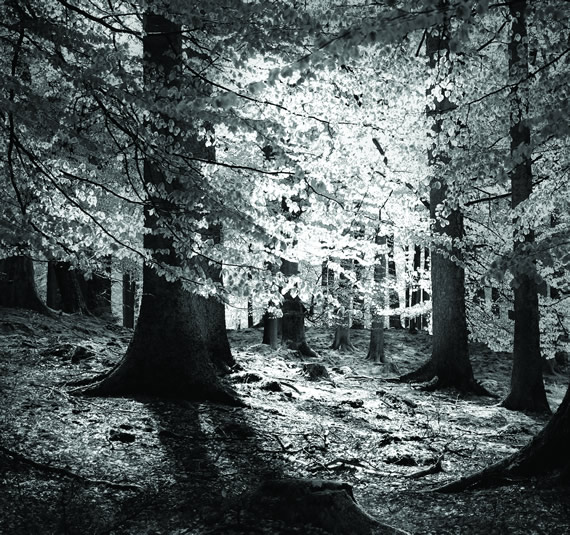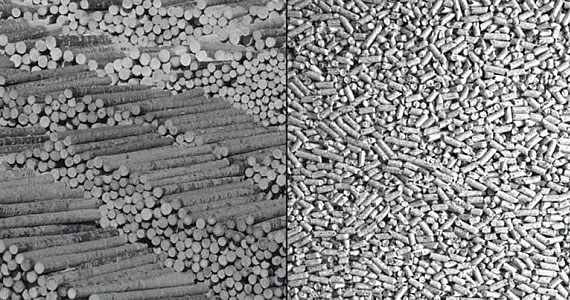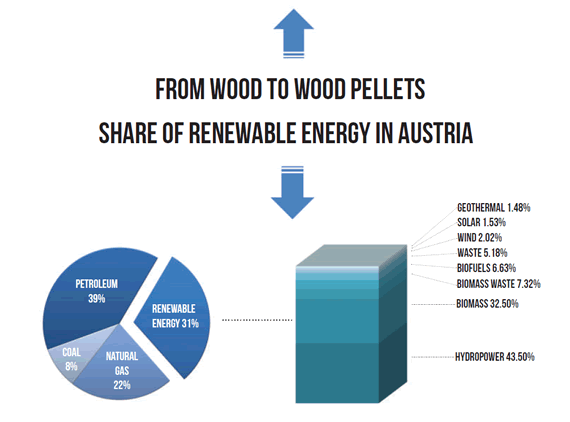Austria’s Successful Rise in Woody Biomass

The Importance of Renewable Energies to Achieve Energy Independence
by Hans Kordik
The call for energy independence has been on the political agenda across the globe for many decades. While most countries share a growing energy demand, their reasons for looking to reduce energy dependency as well as their chosen strategies vary significantly.
In the U.S., the desire for energy independence had already emerged during the oil embargo of the early 70’s under President Nixon. Most of the State-of-the- Union addresses since have elaborated on this objective. Just in the last Congress, the advocates of climate legislation defended their proposals not so much as mitigating emissions, but rather as finding a solution to the challenge of energy dependency.
Even though all sides talk of energy independence as a worthy goal, since the early 70’s, the share of imported oil has nearly doubled in the United States. Austrian energy strategy focuses on renewable energy and energy efficiency. Just like the U.S., Austria depends on energy imports in the form of fossil energy, primarily oil and natural gas. However, Austria has been working hard to reduce this dependency.
Based on the “Energy and Climate Package” of the European Union from December 2008, Austria is obliged to increase its share of renewable energy to 34% and decrease the CO2 emissions by 16% (based on the reference year 2005) up to the year 2020. Niki Berlakovich, the Austrian Minister of Agriculture, Forestry, Environment and Water Management thereafter announced the goal of becoming energy independent by 2050.
By respecting the targets to combat climate change, the Austrian energy strategy has been established and is set up on the following three pillars:
1. To improve energy efficiency in buildings, in the transportation sector, and in appliances;
2. Promoting renewable energies to generate electricity, heating, and also regarding the transportation sector (e.g. bio fuels and e-mobility); and
3. To safeguard a long term energy supply, investments in the grid infrastructure are foreseen.
Today, Austria is well on its way to reaching the targets set by the EuropeanUnion, as 31% of their total energy consumption and 70.2% of the electrical power derives from renewable energy sources. In the impressive Austrian statistics nuclear energy is excluded, as it’s not considered a renewable energy source.
In a 1978 referendum, the Austrian people rejected the construction of nuclear plants in our country, and a few weeks later the parliament unanimously passed a law prohibiting the use of nuclear power for the production of electricity. Instead, Austria has been using its own renewable resources to generate electricity, heat and fuel.
Back to the roots
While Austria’s renewable energy mix is made up of hydro power, solar thermal energy, photovoltaic, geothermal and wind energy, more than 50% of the Alpine Republic’s renewable energy mix comes from biomass. Biomass is also the dominant renewable energy source in the U.S.
However, while the biomass used in the U.S. is mainly corn to produce ethanol or soybeans to produce biodiesel, Austria uses wood to generate electricity and to heat homes. Since 48% of the country is covered by forests, Austria has abundant resources of wood. Austria‘s strong wood and paper industry provides byproducts like saw dust, bark, and black liquor, which support the use of wood pellets, wood chips and logwood to produce renewable energy.
Wood as an energy source has been forgotten. Still some 150 year ago, more than 95% of the energy created in the United States derived from wood. As the markets of fossil energies like coal, gas and oil emerged, the use of woody biomass practically disappeared. Many myths around this renewable energy source make it challenging for this resource to prove itself as an energy provider on the U.S. market. First of all, the myth is out there that taking wood causes forests to shrink.
In Austria, the contrary is taking place. While the woody biomass industry is growing strong, the share of forest land has steadily increased in the last 50 years. The second myth is that burning wood has a negative impact on GHG-emissions. Based on the carbon cycle, as long as the forest acreage stays the same or as it is the case in Austria, even grows, biomass is carbon-neutral. The level of CO2 released into the atmosphere, is basically the same when the biomass rots on the ground.
The development of CO2- emissions in Austria in the last two decades show that emission levels have increased in the transportation, industry, and manufacturing sector, but have decreased in space heating of buildings.
Austrian woody biomass industry is going international
The positive development of renewable energy using woody biomass goes back to the early ‘80s and has been accelerating in the last decades. The price of fossil fuels has increased and the sustainable awareness and responsibility of the Austrians have supported the growth in recent years.
The government supports investments of boilers and created a “Green-Power Act” providing financial incentives with feed-in tariffs facilitating the positive development. Woody biomass is mainly used in form of wood chips to generate electricity and in district heating, but the number of boilers in residential homes using wood pellets has grown rapidly. While sales of woodchip boilers have increased steadily in Austria for the last three decades and have reached 60,000, the growth of pellet boilers has been more impressive, with over 70,000 pellet boilers installed in the last 15 years.
The Austrian woody biomass industry is making use of this development and has also created thousands of “Green Jobs”. The industry has not only specialized in boiler production, but also in the manufacturing of wood pellets. The reputation of the biomass industry is so strong that currently 25% of all boilers sold within the European Union come from Austria. Based on the recent recognition of woody biomass in the Northeast and the Midwest of the United States, Austrian woody biomass technologies have started to access the market.
Growing role of woody biomass in grassroots strategy of energy independence
The “Land of Mountains,” as Austria is referred to in its national anthem, has realized that skyscrapers are not built from the sky down, but from the bottom-up. Therefore Austria is pursuing energy independence on a regional level. The most impressive example of energy independence on a regional level in Austria is the region of Güssing, a municipality of around 27,000 inhabitants close to the Hungarian border.
During the Cold War it was located alongside the Iron Curtain for 50 years. In 1988, Güssing was one of the poorest regions of Austria. More than 70% of its workforce commuted to other regions. Entirely dependent on fossil energy for electricity, heating, and transportation, Güssing’s annual energy expenditure hovered around $9 million. It was in 1990 that the Mayor of Güssing, Peter Vadasz, recognized the potential of changing Güssing’s energy consumption for improving its poor economic conditions.
He focused on improving the energy efficiency of the region, and on using existing resources such as woodybiomass to make his municipality the first and biggest role model for energy independence in the world. Within eleven years, Güssing became self-sufficient with regards to electricity, heating, and transportation. In addition, more than 60 new companies and over 1,500 new “Green Jobs” were created and the share of commuters to other regions fell to 40%. Since Güssing generates more “green” energy than the region needs, the value added to the region is over $28 million per year.
As a result, greenhouse gas emissions were reduced by over 80%. Numerous other regions in Austria have followed Güssing’s example in the last ten years. Energy independent regions are growing like mushrooms in Austria, demonstrating that this grassroots strategy is in fact the key to success. From Tyrol to Lower Austria, and from Salzburg to Styria, more than 15 regions are now energy independent with regard to electricity, heating and/or transportation. In addition, 66 regions of Austria are taking action to become energy independent in the future.
As a result, 1.7 million inhabitants (21% of Austria’s population) would be able to consider themselves energy independent. Güssing has not only been a model for other regions in Austria, but is gaining popularity around the globe as a prime example of energy independence.


Hans Kordik is the Counselor for Agriculture and the Environment at the Austrian Embassy in Washington, D.C.
